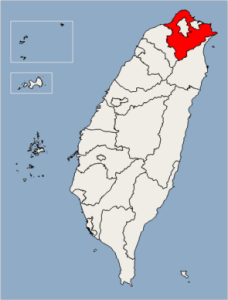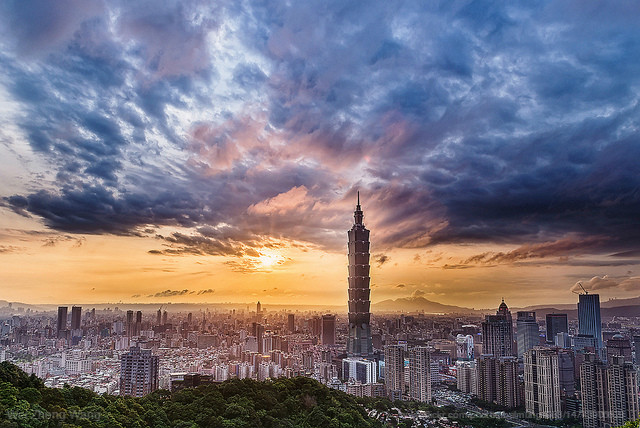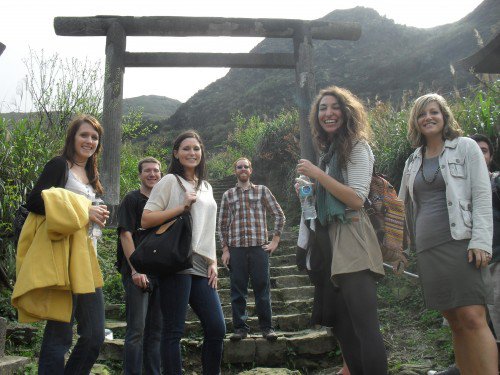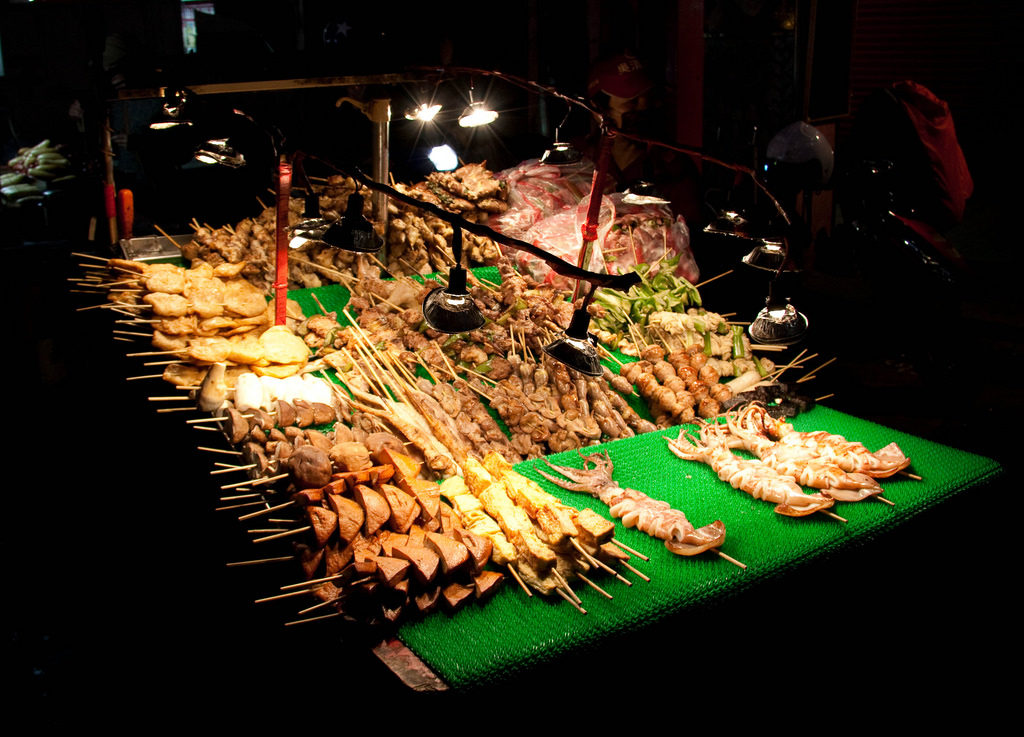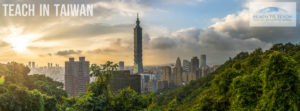Guide To Taipei
Our staff at Reach To Teach have created this handy guide to Taipei to help you familiarize yourself with this incredible city.
Taipei (台北) is the national capital of Taiwan. It is located in the northern part of the island in a basin between the Yangmingshan and the Central Mountains. The largest city of Taiwan, it serves as its financial and governmental center.
HISTORY OF TAIPEI
In 1884 the Qing dynasty governor of Taiwan decided to move the provincial capital to Taipei. With the construction of government offices and the influx of civil servants, Taipei’s days as a sleepy market town were over.
As Taipei is located in the north of Taiwan, the city continued to thrive when Taiwan was relinquished to Japan in 1895. Little regard was paid to Taipei’s traditional Chinese-style architecture and many of the old buildings, including the city walls, were demolished during this time.
During the Japanese period of colonial rule, several prominent buildings were constructed. The Presidential Palace and National Taiwan University are among the most famous, but the city’s architecture suffered again when the KMT government arrived from China in 1945.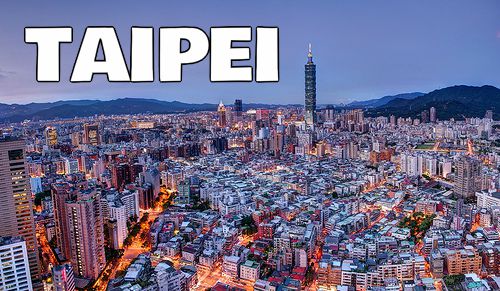
Later, these were replaced by Soviet-era style (or ‘no-style’) concrete apartment buildings. These buildings have characterized Taipei’s landscape for years.
In the 1980s, Taiwan’s economy started to soar. Wages rose and Taipei began to change to satisfy a wealthy and sophisticated market.
Wide, tree lined boulevards were developed, high quality apartment blocks were constructed and stylish restaurants and cafes were established. The city boomed and has never looked back since. It continues to grow at a very fast pace.
Taipei today is a massive city of about 2.6 million inhabitants.
While it is not usually high on the list of tourist destinations, it is a fascinating place to visit and live. Despite its size, Taipei does not have any rough areas that are considered unsafe, even at night. Nomadic Matt has written a terrific guide on things to see and do in Taipei that you should check out. (Say hi for us!)
The downtown area is divided into East and West. The West side, with its narrow streets and road side vendors, is considered the bastion of old Taipei life. East Taipei, with its classy malls, chic boutiques, and stylish restaurants and cafes, represents the city’s metamorphosis into a modern, international city.
CLIMATE IN TAIPEI
Taipei has a semi-tropical climate characterized by hot and humid weather. The most comfortable season to visit is fall, when rainfall is at its lowest and the temperatures average a pleasant mid 20°C.
February to April are particularly damp with little sunlight, while summers are hot and hit with heavy tropical storms. Taipei is prone to typhoons from May to October, though the highest concentrations are in August and September.
GETTING TO TAIPEI
Taiwan Taoyuan International Airport
Taipei’s international airport is officially called Taiwan Taoyuan International Airport (台灣桃園國際機場).
The airport is located about 30 km from the city and freeway buses ply the route, picking up and dropping off passengers at most of the five-star hotels. It also stops at the Taipei Main Station and the domestic airport (Songshan Airport), which is located in downtown Taipei. New arrivals can hop on the MRT directly from the airport to Taipei and New Taipei.
There are bus services connecting the airport to Taipei and nearby cities, including Taichung in central Taiwan.
There are many transportation options at the airport: MRT, bus, high speed rail, taxi, and Uber. Here are the options from cheapest to most expensive forms of transportation:
MRT: The MRT line from Taipei-Taoyuan airport is open and can brings guests directly from the airport into New Taipei and Taipei. This is the cheapest and quickest option for travelers.
Express airport buses cost between NT$120 and NT$150 depending on the bus company. There are stops at both terminals. Most Taipei routes are divided into West and East, with each company operating a service every ten to fifteen minutes on each route.
The western bus line terminates at Taipei Main Railway Station. It also makes a stop at Yuanshan MRT Station on the Xindian line. Buses on the eastern route stop at the Taipei Grand Hyatt Hotel and make a stop at Zhongxiao-Fuxing MRT Station on the Nangang and Muzha lines. There is also a bus connecting to the domestic Songshan Airport. Ticket counters display route maps showing all stops.
In addition, there are some non-express buses which are slightly cheaper, but pass through towns such as Taoyuan, Nankan or Kueishan before arriving in Taipei.
When returning to the airport, express buses can be caught at various stops throughout the city. One major one is accessible via Exit 9 at the underground mall beneath Zhongxiao West Road (in front of Taipei Main Railway Station) or Exit 5 if you are coming out of the Taipei Main Station MRT.
Another is at the terminal at the Songshan Domestic Airport (松山機場). Other stops are outside major hotels and also in front of Minsheng MRT Station.
For people taking early morning flights, the earliest available buses to the airport leave at around 4AM from the Far Eastern Plaza Hotel (台北遠東國際大飯店) (201 Dunhua South Rd Section 2).
It is also easy to get to the MRT from the airport to downtown Taipei.
Ubers are prolific in Taiwan and it has never been easier to get around. If you decide to take an Uber to Taipei, expect to pay NT$1,100 minimum.
Direct bus connections between the airport and other cities in Taiwan are also available. U-bus also runs shuttle buses every 30 min from both terminals to THSR Taoyuan Station (15 min away) where you can continue your journey by high-speed train.
Songshan Airport
Songshan Airport (松山機場) at the top end of Dunhua North Rd is the city’s domestic airport, and there are flights arriving and departing for all major cities on the island and the outlying islands every minute. It also serves weekend flights to mainland China.
Train Stations
All inter-city trains, including those operated by the Taiwan High Speed Rail arrive and depart from Taipei Railway Station (台北車站) on Zhongxiao West Road, Sec 1 – opposite the 53 story Shinkong Mitsukoshi Building (新光三越).
Taipei Main Station is a huge complex. Ticket counters are on the first floor and platforms in B1. There is also a food court on the second floor, several underground shopping malls, an auditorium on the 5th floor, and MRT stations serving three lines.
In addition to ticket counters, the first floor also has a tourist office, small supermarkets, a post office, stores selling aboriginal handicrafts and several booths offering head and neck and full body massage (NT$100 for every ten minutes).
Bus Stations in Taipei
Private and government inter-city buses arrive and depart from the Taipei Bus Terminal. The terminal is a few minutes walk to the west of Taipei Railway Station.
A convenient way to reach the terminal is via the underground ‘Taipei Shopping Mall’ (located at the rear/north side of the station). ‘4 South (南)’ is the nearest exit to the terminal.
Generally speaking, the buses operated by private companies are more comfortable and have wide reclining seats and individual game and video monitors. The government buses are blue and white and are called guoguang hao (國光號).
All intercity buses are known as keyun and can be distinguished from the local city buses called gongche (公車). They do not have a route number and only use the name of the destination.
TRANSPORTATION & GETTING AROUND TAIPEI
Metro System (MRT)
Taipei City has a very clean, efficient and safe Mass Rapid Transit system known as the MRT or Metro Taipei (台北捷運). The last trains depart at midnight. Fares are between NT$20 and NT$65 for one-way trips around town.
Stations and trains are clearly identified in English, so the MRT system is very accessible for English speakers. All stops are announced in four languages: Mandarin, Taiwanese, Hakka and English.
Most stations have information booth/ticket offices close to the ticket vending machines. There is no eating or drinking while in the stations or on the trains. Trains generally run from 6AM to midnight with convenient bus connections outside the stations.
Women and/or children traveling at night can benefit from the Safe Zones – sections of platforms that are under heavy surveillance – located in some of the subway lines.
In addition to single journey tickets, the Taipei MRT also sells value-added cards/smart cards called EasyCard (悠遊卡). These cards hold up to NT$5,000, and passengers can swipe them past the barrier to gain entry and exit.
Value added cards can be purchased at station ticket offices or at vending machines.
One great advantage of using the EasyCard is that there is a 20% discount on all MRT rides, and if you transfer from the MRT to an ordinary city bus, or vice versa, within an hour, the bus ride is only NT$7. The discount is automatically calculated when you leave the MRT station.
The EasyCard can be recharged at convenience stores and subway stations. In addition to the subway and buses, some parking lots also offer an option to pay with the EasyCard. To purchase a new EasyCard you will need to pay a deposit of NT$100.
Often times limited-edition cards are issued by the transit authority depicting artworks, famous characters, landscapes, etc. Single-journey cards are recycled when you exit the stations.
Bus System
Taipei City has an efficient bus service. The system is very accessible to non-Chinese speaking visitors because all buses display information (destination and the names of stops) in English.
Payment can be made by cash (NT$15) or by EasyCard (see “metro” listing) for each section that the bus passes through. For local buses (all local buses have a number, but long distance buses do not) the maximum will be two sections with a total cost of NT$30.
When to pay: Above the driver, there is an electronic red sign. If the Chinese character for “up” (上) is lit, then you pay when you get on. If the same sign is lit when you get off, you do not need to pay again.
However, if the sign is displaying the Chinese character for “down” (下) when you are getting off, then you will need to pay a second time. Finally, if the character for “down” is lit up when you get on, then you only need to pay when you get off. Until you get the hang of the system, just let the locals go first and follow their action. It’s really not as complicated as it sounds!
If you are transferring from the transit system to a bus within one hour, there is a discounted bus fare.
Taxi
Taxis are the most flexible way to get around, and are extremely numerous. They are expensive compared to mass transit, but are cheap when compared to taxis in the rest of the world.
Most taxi drivers speak limited English. Non-Chinese speakers should have their destination written down in Chinese. Taxis are metered, with higher rates for night (an additional NT$20 over the meter). Tipping is neither necessary nor expected.
LANDMARKS IN TAIPEI
 Taipei 101 (臺北 101)
Taipei 101 (臺北 101)
Officially known as the Taipei International Financial Center (臺北國際金融大樓), this 101-floor, 508-meter high skyscraper is located in the Xinyi District of Taipei.
At one time it was the tallest building in the world. The tower is rich in symbolism. It was designed to resemble bamboo rising from the earth, a plant recognized in Asian cultures for its fast growth and flexibility, both of which are ideal characteristics for a financial building.
The building is also divided into eight distinct sections, with eight being a number associated with prosperity in Chinese culture. The internal architecture of Taipei 101 is awe-inspiring.
Pay attention to ornate details on the structural beams, columns, and other elements. Taipei 101 is most notable for its feats of engineering. It was the world’s tallest building until 2004.
101’s super fast elevators zip visitors up to the 89th-floor observation deck in a mere 37 seconds. (cost: NT$400 for adults, NT$370 for kids under 12). It’s worth taking a ride up as the views are stunning.
The best time to visit is late afternoon when you spend a couple of hours and see both day and night views of Taipei. For an additional NT$100, you can also go up to the outdoor observatory on the 91st floor. Don’t forget to look toward the middle of the building, where you’ll see one of the massive gold dampers that keep the building steady. (The damper is Canadian technology and showcases the strong relationship between Canada and Taiwan.)
Attached to the tower is a large, up-scale mall. While the stores are unremarkable in that they offer the same brand-names as stores in other major cities around the world, the open and spacious design of the structure itself definitely makes it worth a visit.
A supermarket specializing in imported food items is located in the basement. Taipei 101 is very easy to reach thanks to the new MRT line, you simply take the red line to Taipei 101/World Trade Center.
Sun Yat-sen Memorial Hall (國父紀念館)
This complex was constructed in memory of Dr. Sun Yat-sen who is the founding father of the Republic of China.
The construction of the Memorial commenced in 1965 in conjunction with the 100th anniversary of Sun Yat-sen’s birth.
It was opened in May 16, 1972, with the majestic architecture and placid landscape covering an area of some 115,500 sq. meters. The park named Zhongshan Park marks the front yard of the Hall. On the inside, there is a 19-foot bronze statue of Dr. Sun Yat-sen, watched over the day by motionless military honor guards, along with a library of 400 seats storing over 1.4 millions books.
The 100 meter long Zhongshan corridor links the main hall to the four large exhibition buildings where contemporary arts and historical articles are frequently on display.
There is an auditorium which has weekly lectures and seminars on aspects of art and life. It is also a popular site for public concerts.
Chiang Kai-shek Memorial Hall (中正紀念堂)
Controversially renamed the “National Taiwan Democracy Memorial Hall” (臺灣民主紀念館) by the DPP, this building is the symbol of both Taipei and the Republic of China.
The nation’s flag is raised here every morning, and the huge court yard in front of the memorial serves as a place for both national celebrations as well as a platform to voice one’s disapproval of the government.
The memorial consists of a large bronze statue of Chiang Kai-shek, watched over by two motionless honor guards who are replaced every hour a changing of the guard ceremony.
Downstairs, there is a museum of Chiang’s life, complete with his sedans and uniforms. Even if you are not into memorials, the gardens, with their Chinese style ponds, are definitely worth a visit. The memorial has its own MRT station on the Xindian line.
The grounds of the memorial are also a favorite place for locals to gather and practice martial arts, though you’ll have to be there early if you want to see this. It is also a favorite workout spot in the evenings as well.
National Theater Hall (國家戲劇院) and National Concert Hall (國家音樂廳)
Located in the grounds of the Chiang Kai-shek Memorial are excellent places to see performances of a Taiwanese play or dance troupe. They also host many international events.
The building’s neo-classic Chinese architecture is especially stunning when flood-lit at night.
National Taiwan University (台灣大學)
National Taiwan University, Taiwan’s preeminent institution of higher education, is located on the south side of Taipei. The campus grounds are surrounded by several blocks of shops, bookstores, eateries, cafes and tea houses popular with students and scholars. This is a main transportation hub as many buses stop here.
While you wait for your bus, or before you go underground to catch the subway, you can shop for clothing, accessories, books, or trinkets.
Browse through the stalls and booths directly across the street from the main entrance of the university, grab a bite or two of the popular snacks, such as fresh fruit, spice-cooked meats, soy goodies, sky high ice cream cones, sweets, shaved ice, tapioca teas, fresh bread, and more.
Try a “Gua Gua Bao,” a flavorful sticky rice pouch. If you like sweet potato, Ding Gua Gua’s fries will make you want to come back for more! There are many American fast food restaurants across the street on the right of the University, right next to several wonderful book stores. Nearest MRT station: Gongguan (公館) on the Xindian (Green) Line.
The Grand Hotel (圓山大飯店)
A 5-star hotel near Yuanshan, The Grand Hotel was rated as one of the world’s top ten hotels by the US Fortune magazine in 1968. It opened in May 1952, and expanded several times before becoming the landmark it is today.
The swimming pool, tennis court, and membership lounge were constructed in 1953. The Golden Dragon Pavilion and Golden Dragon Restaurant opened in 1956 and the The Jade Phoenix Pavilion and Chi-Lin Pavilion opened in 1958 and 1963 respectively.
The main Grand Hotel building was completed on the Double Tenth Day of 1973, making it an instant icon of Taipei. And this hotel is a part of scene in the Taiwanese film – Eat Drink Man Woman by the world famous Director – Ang Lee.
TAIPEI MUSEUMS AND GALLERIES
The National Palace Museum (故宮博物院)
The world’s best collection of Chinese historical artifacts and antiquities. The museum is located in Shilin. The nearest MRT station is Shilin (士林), with frequent buses from Shilin heading for the Palace Museum. Look for the displays on the buses. Some are written in English. It’s a must-see for first time visitors.
Taipei Fine Arts Museum (台北市立美術館)
181 Zhongshan North Rd, Sec. 3 (near the Yuanshan MRT Station on the Danshui line). Open Tues-Sun 9:30AM-5PM. Adult admission NT$30, concessions NT$15. The museum displays work of local and international artists.
Hua Shan Cultural and Creative Industry Center (華山創意文化園區)
1 Bade Road, Sec 1. This former brewery has been transformed into a creative space in a park. The exhibitions here are well presented and imaginative and the theater performances, while less formal than those at the National Theater, are still first rate. The center also has a great cafe with outdoor seating, an excellent place to watch Taipei at work and play over a cappuccino.
Spot – Taipei Film House (台北之家)
Zhongshan North Rd, Sec. 2 (nearest MRT Station: Zhongshan on the Danshui line). This former residence of the U.S. Ambassador has been transformed into an art center that focuses on independent films. In addition to screenings, the house also has great cafes and restaurants that spill out onto balconies and into the garden.
Open Tues-Sun, 11AM – 10PM. Admission is free.
Parks – Guide to Taipei
Daan Forest Park (大安森林公園)
One of Taipei’s newest parks. The park rests on 26 hectares in central Taipei bordered by Xinyi Road, Jianguo South Road, Heping East Road, and Xinsheng South Road.
Due to its size and location, it is also known as Taipei Central Park. Bus lines 15, 52, 235, 278, 284, 20, 22, Xinyi Main Line service this park.
Taipei Botanical Garden (植物園)
The gardens are nearest MRT station ‘Xiaonanmen’ on the green line between the MRT Ximen station and MRT C.K.S Memorial Hall station. This beautiful garden has inspired the citizens of Taipei for over one hundred years.
The lotus ponds are a hallmark of the park and are especially captivating when the these symbols of peace are in full bloom and swaying in the summer breeze. The gardens are close to the National Museum of History.
228 Peace Park (二二八和平公園)
This park is on the north side of Katagalan Boulevard and the MRT station ‘National Taiwan University Hospital’ on the Danshui line. The park was founded by the Japanese in 1907, and was originally called New Park (新公園).
The name was changed in 1996 to commemorate those killed in the 228 Incident of 28 February 1947. The park is popular with practitioners of taichi and senior citizens playing Chinese chess. The National Taiwan Museum marks the northern entrance to the park.
GUIDE TO TAIPEI TEMPLES
Longshan Temple (龍山寺)
This temple is where countless generations of Taipei citizens have come to pray and seek guidance at times of trouble.
As the temple is dedicated to Guanyin (the Buddhist representation of compassion) it is officially defined as Buddhist, but there is a great amount of folk religion mixed into the fabric of the beliefs at this temple.
However, if you want to feel the real heartbeat of Taipei, one that is far removed from the skyscrapers and shopping malls of East Taipei, this is the place to come. It oozes character, although don’t come expecting to find teachings on meditation.
Wanhua is the area around Longshan Temple, and it is one of the oldest districts of Taipei. While much of the traditional architecture has been lost, the area still looks like old Taipei.
Likewise, this is the area where the Taiwanese come to learn who they should marry or what to name their children by consulting one of the many fortune tellers that set up shop along the roads and alleys around the temple.
The temple is located at 211 Guangzhou Road (near junction with Guilin Road) and is open daily from 5 a.m. to 10 p.m. The nearest MRT station is ‘Longshan Temple’ on the Ban-Nan Line.
Baoan Temple (保安宮)
61 Ha-mi St, the nearest MRT station is ‘Yuanshan’ on the Danshui Line. Construction began on this temple in 1805 and it was completed 25 years later.
Baoan is a Taoist temple and one of the leading religious sites in Taipei. The temple’s main deity is the emperor Baosheng, the god of medicine.
The mural paintings and sculptures that adorn the the building are considered some of the most impressive in Taiwan, and the temple won acclaims in the 2003 UNESCO Asia-Pacific Heritage Awards.
Confucius Temple (孔廟)
Just next to Baoan Temple, the Confucius Temple was built in 1879 when the Qing Court changed Taipei into a prefecture of the Province of Fujian, China. It was established to serve as the largest educational center in northern Taiwan.
Every September 28th, a large number of people from Taiwan and abroad come here to watch a solemn Confucius birthday ceremony and eight-row dance. The temple is located at 275 Dalong St, the nearest MRT station is ‘Yuanshan’ on the Danshui Line.
THINGS TO DO IN TAIPEI
Hot Springs (溫泉)
Hot springs come in various brands in Taipei, ranging from basic, to plush spas at five star hotels. The basic free ‘rub and scrub’ type public baths are run by the city.
Here is a handy Guide To Soaking in Taiwan’s Hot Springs for easy reference.
Most hotels offer the option of a large sex-segregated bathing area that generally consists of several large baths of various temperatures, jacuzzi, sauna and steam bath and also private and family rooms (NB: the law in Taiwan states that for safety reasons, individuals are not allowed to bathe in the private rooms, and there must be at least two people).
Some hotels also have outdoor baths (露天溫泉), which offer restful views over the surrounding country-side. Prices range from around NT$300 to NT$800.
Public hot spring etiquette requires that bathers thoroughly wash and rinse off their bodies before entering the bath, do not wear clothing (including swim wear) in the bath and tie up their hair so that it does not touch the water. Finally, people with high blood pressure, heart disease or open wounds should not enter the baths.
There are three main places to have a soak in the Taipei area:
Reach To Teach Hiking Event
Hiking in Taipei
Hiking is a popular exercise in Taipei. The main hiking spot in Taipei is Yangmingshan National Park (陽明山國家公園). There are dozens of hiking trails in the park.
For an easier and more accessible climb with stunning views of all of Taipei city and 101 you might try hiking one of the four beasts (elephant, leopard, lion and tiger mountain).
At the end of the new red line you can get off at Xiangshan (elephant mountain) and begin your hike. It will take less that 30 minutes to get to the top where you can enjoy the views.
Taipei Zoo (台北動物園)
Nestled in a tight, lush valley, Taipei Zoo has the leisurely charm of a large park, but for NT$60 you also get the enjoyment of wandering through trees and along lanes with a variety of animals and birds.
Unlike many traditional zoos, the animals here are not confined to cages. They roam freely in open paddocks. It is a very clean and well maintained facility. Furthermore, due to the city government’s education policy, the zoo is very much an integral part of Taipei life.
When an old elephant, Lin-Wang (林旺), became ill and died several years ago, several generations turned up, many with tears in their eyes, to say their farewells.
The zoo is located in the suburb of Muzha. The entrance is just outside the terminal stop on the Muzha MRT line, ‘Taipei Zoo’. Located at 30 Xinguang Rd Sec. 2
Leofoo Village Theme Park (六福村主題樂園)
Located in Guansi township, Hsinchu County. It is the one of the largest theme parks in Taiwan. The park is made up of a huge central fountain area which then has 5 worlds branching off of it, including a water park and a zoo.
Leofoo Village Theme Park opens from 9AM-5:30PM Mon-Fri, 9AM-6PM on public holidays. From Taipei you can take a bus direct from Zhongxiao Dunhua bus stop (located in the middle of Dunhua South Road opposite exit 8)
LEARNING CHINESE: LANGUAGE INFO
Center for Chinese Language and Culture Studies. National Taiwan Normal University (Shida), 162 Heping East Rd, sec. 1. Tel+886 2 2321-8457 & 2391-4248. Fax:886 2 2341-8431, e-mail: mtc@mtc.ntnu.edu.tw. This school, which is part of Shi-da University, has seen generations of students passing through its doors and it remains one of the most popular schools in Taiwan for serious students of Mandarin.
International Chinese Language Program National Taiwan University (Taida). This program, which used to be called the IUP program, has a long history of Chinese language training, especially for advanced learners and primarily targeting graduate students, scholars and professionals studying in China and Taiwan.
SHOPPING GUIDE TO TAIPEI
Xinyi District is the seat of the Taipei mayor’s office and the Taipei city council. The Taipei Convention Hall, the Taipei World Trade Center, Taipei 101, Taipei City Hall, and various shopping malls and entertainment venues make Xinyi the most modern cosmopolitan district of Taipei.
Xinyi District is also considered the financial district of Taipei. Much of the district used to be wetlands, explaining the abundance of space for construction projects as this was one of the last places in Taipei to be developed.
The district is the premiere shopping area in Taipei. Xinyi District is anchored by a number of department stores and malls. In addition, numerous restaurants are located in the area, especially American chain restaurants.
Shilin Night Market has stores selling good, hand bags, clothing, and more. Most of the merchandise consists of imitations. To get there, take the MRT Danshui Line to Jiantan Station. The food court is located directly across the street from the station with the rest of the night market spreading out to the north.
Miramar Entertainment Park is a standard shopping center with the usual merchandise. It houses the only IMAX theatre in Taiwan as well as the Miramar ferris wheel which offers great views of Taipei city.
Eslite Mall (誠品 Chengpin) is an upscale market-style shopping center with a 24 hour book shop (with a good English selection) on the second floor and ethnic music store in basement. 245 Dunhua South Road (near intersection with Renai Road).
Breeze Center (微風廣場 Weifeng Guangchang), 39 Fuxing South Rd, Sec. 1 (near the intersection with Civic Boulevard) Tel:+886 2 6600-8888. Open: 11AM-9:30PM Sun-Thur, 11AM-10PM Fri-Sat.
A main shopping area is also located around the Sogo Department Store on Zhongxiao East Road, Sec. 4(nearest MRT Station: Zhongxiao Fuxing), and the lanes and alleys around Da’an Road (behind Sogo) have an interesting array of small shops and boutiques. Buddha Statues, prayer flags and other artifacts associated with Tibetan Buddhism can be purchased at Potala, 2F, 2-4, Lane 51, Da’an Rd. Tel:+886 2 2741-6906.
Computer buffs will enjoy a visit to Guanghua Digital Plaza (光華數位新天地), originally called Guanghua Market (光華商場). Specializing in computer and electronic goods, this market has the largest number of stalls selling hardware and software under one roof in Taiwan, and all at very competitive prices.
The new building comprises of six floors: the first floor contains an exhibition area for new products and a food court; the original vendors of the old market are located on the second and third floor; floors four and five include vendors and shops from the Xining Electronic Market; and the sixth floor houses product repair centers.
Ximending (西門町) is the trendy shopping area just west of downtown. It’s popular with local students for shopping and coffee bars, and it offers a number of movie theaters. It is also Taiwan’s main gay district.
To get to Ximending, take the MRT Blue (Bannan) Line and get off at Ximen Station.
Weekend Jade Market (假日玉市) – Located under an elevated expressway, reaching from Renai Road & Jianguo South Road intersection down Jianguo Road. till Xinyi Rd.
In addition to jade, flowers and many other kinds of handcrafts and jewelry can be purchased. There are actually three different markets, the Weekend Jade Market, Weekend Flower Market and Weekend Handicrafts Market in this same location. And, as the names suggest, they’re only open on weekends until 6PM.
GUIDE TO TAIPEI – WHERE TO FIND FOOD
In short, Taiwan is a Foodie Haven. There’s nothing you can’t get here. Taipei has a vibrant dining scene that will delight all tastes and palates.
Chinese Cuisine
Tien Hsiang Lo (天香樓), B1, 41 Minquan East Rd, Sec. 2. (The Landis Taipei Hotel). Authentic Hangzhou cuisine. Reservations are recommended.
Pearl Liang (漂亮中式海鮮餐廳), 2F, 2 Songshou Rd (Grand Hyatt Taipei). Offers unique, fresh, live seafood and dim sum.
Din Tai Fung (鼎泰豐), 194 Xinyi Rd Sec. 2 (Entrance of Yongkang Street). Famous for its steamed pork dumplings. Worth a detour. Several locations in Taipei and worldwide. Gets very crowded even on weekdays so book in advance.
Yongkang Beef Noodle (永康牛肉麵), 17, Lane 31, Jinshan South Road Sec. 2. One of the top-twenty beef noodle shops in Taipei.
Kiki Restaurant (老媽餐廳), 28, Fuxing South Road Sec. 1. Just Opposite the Breeze Center, this restaurant serves Szechwan peppery hot pot, fried tofu and more.
Taiwanese Cuisine
Ching-Yeh (青葉餐廳), 1, Lane 105, Zhongshan North Road Sec. 1. The most famous Taiwanese restaurant in Taipei, beside the Zhongshan North Road.
Shinyeh’s Table (欣葉蔥花), 2F 201 Zhongxiao East Road Sec.4. Near the MRT Zhongxiao Fuxing Station, located right inside the Tongling Department Store. It’s the newest Taiwanese cuisine restaurant in Taipei. Menu has English.
Thai Cuisine
Thai Heaven Restaurant (泰平天國), 60 Roosevelt Rd Sec. 2. Near the Taiwan Normal University (Shi-da) this restaurant serves authentic fire-hot Thai cuisine. Try the Moon Shrimp Cake and Green Papaya Salad.
Indian
Tandoori Indian Restaurant (坦都印度餐廳), 10, Lane 73, Hejiang Street.
Out of India (印渡風情), 26, Lane 13, Pucheng Street (second lane on right off Shi-Da Road when traveling from Heping East Road). Tel:+886 2 2363-3054 – food ok, but not great value.
Pizza
Pizza is easy to find in Taiwan with major chains such as Pizza Hut and Domino’s.
Love at First Bite serves traditional deep-dish Chicago style pizza as well as other traditional American dishes and out of this world cheesecake.
Casa Della Pasta 7-1, Lane 11, Zhongshan North Road, sec 2. Reasonably priced pizzas at good prices. Authentic Italian decor.
Steak
Ruth’s Chris Steak House (茹絲葵), 2F, 135 Minsheng East Road, Sec 3. Perhaps Taipei’s best-known and best American steakhouse.
Lawry’s Steak House 12F Core Pacific Living Mall (京華城), 138 Bade Road, sec 4.
Vegetarian
Vegetarian food (素食) is also common fare, with the city boasting more than two hundred such restaurants and vendor stands. Another Taipei specialty is vegetarian buffets.
They are common in every neighborhood, and unlike the ‘all-you-can-eat’ buffets listed below (which charge a set price, usually ranging from NT$250 – NT$350 including dessert and coffee/tea), the cost is estimated by the weight of the food on your plate.
Rice (brown or white) is charged separately, but soup is free and you can refill as many times as you like. NT$75-120 will buy you a good sized, nutritious meal. Note that many of these veggie restaurants are Buddhist in nature and so meals do not contain garlic or onion (which traditionalists claim inflames passion).
Herban Kitchen & Bar 27, Lane 101, Zhongxiao E Rd, Sec 4, Taipei City – A little green oasis tucked away in the heart of Taipei’s urban jungle, Herban offers innovative and western friendly dishes with reasonable prices and a very chic interior.
Lotus Pavilion Restaurant B1, 153-155 Xinyi Road, Sec. 4 (entrance in alley behind Changhwa Bank. An upscale all-you-can-eat buffet.
Heart of the Lotus Garden 2F No. 108 Xinsheng North Road, Sec. 2 (near intersection with Jinzhou Street – This is another upscale all-you-can-eat buffet.
For a special Taipei street experience, check out the veggie vendor outside No. 30, Lane 216, Zhongxiao East Road Sec. 4 (in the alleys behind the Dunhua South Road Eslite Mall and book store). The rice noodles are especially delicious and cheap and a plate of their dougan (dried tofu) makes a great side dish.
WHERE TO DRINK IN TAIPEI
Bars/Clubs
Ziga Zaga No.2, Song Shou Road, Grand Hyatt Taipei. This club specializes in cocktails and Italian cuisine – both the service and food are excellent. It’s popular with locals and ex pats. Ladies Night on Wed.
Carnegie’s 100 Anhe Road, Sec 2. Popular with locals and ex pats. Ladies Nights on Wed. The outdoor patio is perfect for those who prefer quieter and less smoky atmospheres. The scene is geared toward the 30+ ex pats and locals.
Tea Houses
Taiwan’s specialty tea is High Mountain Oolong (高山烏龍, a fragrant, light tea) and Tieguanyin (鐵觀音, a dark, rich brew).
Wisteria House (紫藤廬), 16 Xinsheng South Road, Sec 3. Wisteria is set in a traditional house, complete with tatami mats, and is a great place to spend an afternoon relaxing with friends and soaking up the atmosphere of Taiwan.
Hui Liu (回留), No 9, Lane 31, Yongkang Street. Located next to the small and verdant Yongkang Park, Hui Liu is a modern style tea house. In addition to serving Chinese tea, Hui Liu is also famous for its organic vegetarian meals and hand made pottery.
Teng (藤居), 29, Lane 61, Linyi Street (between Renai Road, sec 2 and Xinyi Road, sec 2). A rustic tea house and art studio in the heart of Taipei.
The mountainous Maokong area of Muzha in the Wenshan district of the city has dozens upon dozens of teahouses, many of which also offer panoramic views of the city – especially spectacular on a clear evening. A Maokong Gondola (cable car) system services the Taipei Zoo MRT station to Maokong. The S10 bus comes up from the Wanfang Community MRT station.

